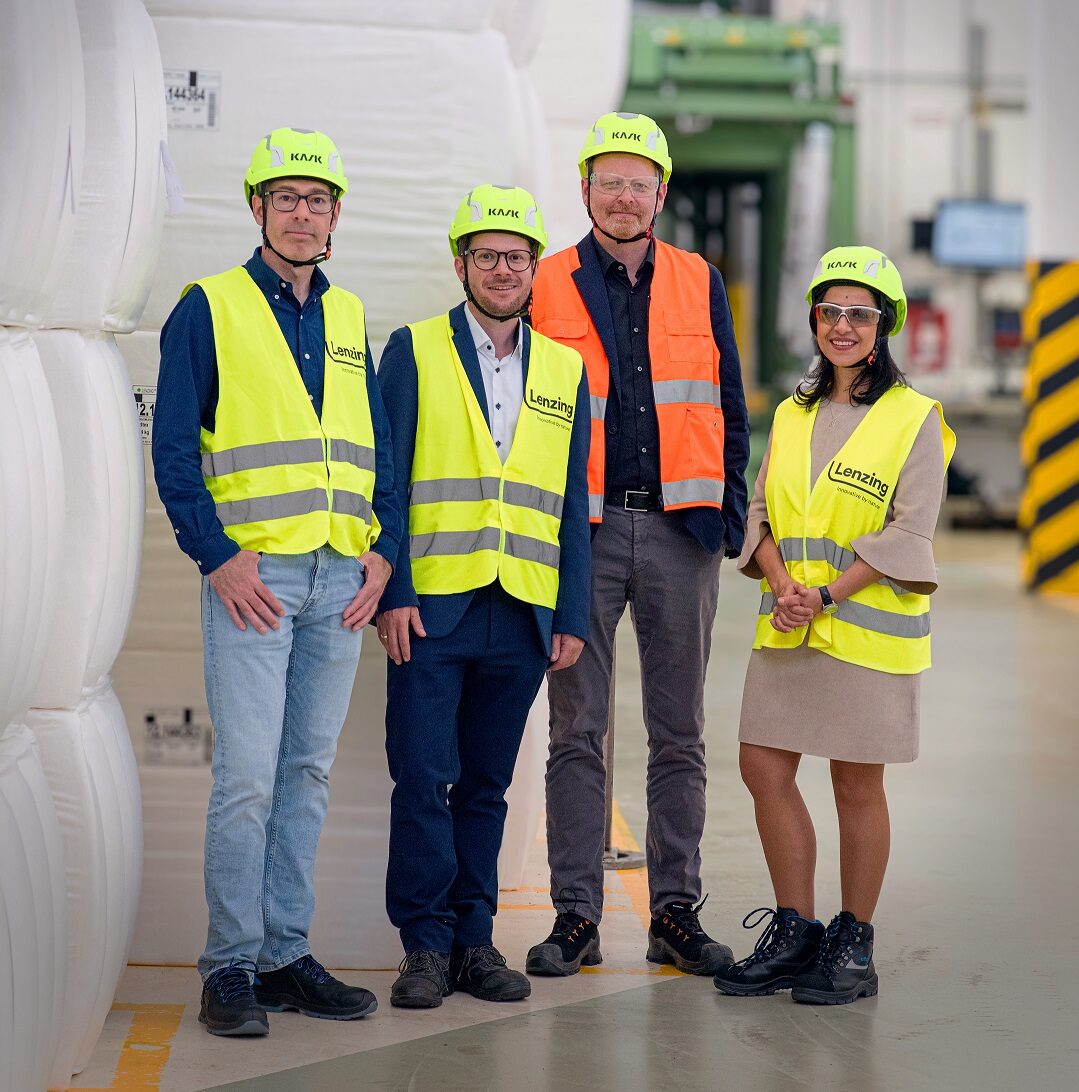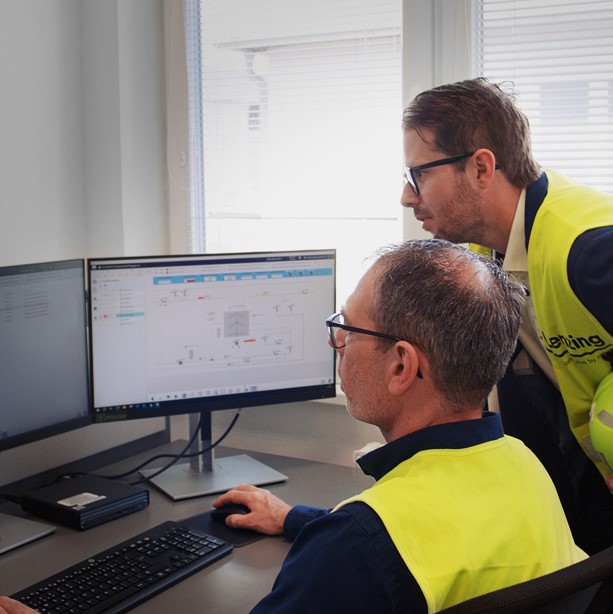Digital Twin empowers a circular economy in fiber production
Digital Twin empowers a circular economy in fiber production at Lenzing AG.

Digital Twin empowers a circular economy in fiber production at Lenzing AG.

More than ever, today’s consumers want products that have a lower environmental footprint, and that of course extends to the textile industry. Lenzing AG is answering that call with its TENCELTM lyocell and modal fibers. Siemens has helped fulfill the company’s mission of a circular economy and sustainable production by digitalizing processes with solutions like Comos, Simit, Simatic PCS neo, and even AI.
Soft to the touch yet durable and moisture-wicking, TENCEL™ can be used for everything from active wear to high fashion. At the end of life, used TENCEL™ fibers can be recycled to new, virgin fibers. And, when recycling isn’t feasible, the fibers completely biodegrade.
It only makes sense that these environmentally friendly fibers are made as responsibly as possible. That’s why Lenzing continuously develops innovative technologies for the production of sustainable products. A special focus is on the optimal utilization and processing of all raw materials and the efficient recovery of chemicals, water and energy. These are just some of the ways the Lenzing Group is forging ahead to create a comprehensive fiber circular economy.
Lenzing aims to unlock capacity and further streamline its operations, beginning with its site in Lenzing, Salzkammergut, Austria. “To be successful, we need to continuously optimize existing technologies, develop innovative solutions, and scale our production capacities globally,” says Enrico Thallmann, Vice President of Global Projects and Engineering at Lenzing. Digitalizing production emerges as the key strategy to achieve these objectives, and Siemens, a leader in digital and sustainable production processes, proves to be the ideal partner for Lenzing.
 © Siemens
© SiemensCo-creation is the enabler for a sustainable future (from left): Thomas Wolf, Daniel Kern, Christoph Sedminek, and Mahboobeh Bayat
The Digital Twin of a production plant enables a wide variety of situations to be simulated as often as required, regardless of the availability of real infrastructure, machines and production facilities. An intelligent representation of reality on the screen, for all areas of a production company, usable and retrievable worldwide.
Enrico Thallmann, Vice President Global Projects and Engineering at Lenzing
Here are some of the accomplishments Siemens and Lenzing achieved in a co-creation process that revolved around connecting the real and digital worlds – a project that was carried out, from planning to implementation, in just six months:
Operational flexibility
Feedstock varies at Lenzing, from virgin materials to recycled fibers. And depending on the feedstock, different levels of energy are required. Online simulation helps to find the optimal settings for production, also taking energy prices into account. The flexibility offered here is even more important as the feedstock of recycled material is expected to increase as European Union legislation to reduce textile waste and to strengthen the continent’s circular economy starts taking effect in 2025.
Time savings
Through extensive use of software such as Comos for process plant engineering and Simit for simulation of automation functions, the foundation for the Digital Twin was set and engineering times could be shortened. Moreover, less time was needed for commissioning because all processes could first be tested virtually. As a gateway for efficient operation and engineering, the Digital Twin also helps in planning and execution of maintenance activities with a seamless workflow and documentation.
Future readiness
Using AI to make old legacy planning documentation of a production plant – such as P&IDs – intelligent and finally usable as basis for modernization and expansion projects. This will result in more efficiency and less administrative effort on the long term. For sure after some effort the AI needs to be trained. This data is then available in Comos and helps to keep the Digital Twin up-to-date.

Simatic PCS neo empowers plant operators to work with a new level of efficiency
Remote support
The process control system Simatic PCS neo was selected for the automation of one plant. As an integral part of the Digital Twin, this completely web-based system allows engineers and operators to work always securely and intuitively from any location and on any device. Thanks to this capability, support from Siemens was provided entirely remotely. The low installation effort of Simatic PCS neo, along with the possibility of continuous standardization and the intuitive user interface, shortened development times for planning and production start-up, while remote troubleshooting minimized travel times. Whenever information is required local outside in the field, Simatic eaSie can provide the information quickly and easily, drawing the information from the existing DCS, whether Simatic PCS neo or Simatic PCS 7. The lean app, with chat or voice interaction, can also be used to carry out operating procedures, eliminating walkie talkies and pen&paper – which are error prone.
By leveraging Digital Twin and process control technology from Siemens, Lenzing has expanded production capacities and identified inefficiencies. The result is higher output and enhanced sustainability. Lenzing has successfully achieved its digitalization goals and contributes to a sustainable circular economy by enhancing efficiency, reducing waste, and supporting long-term environmental goals.
The success achieved here is now being replicated at other Lenzing locations in Europe, Asia, and the Americas, further advancing sustainability efforts. Teams at these sites can rely on Siemens for continued support.